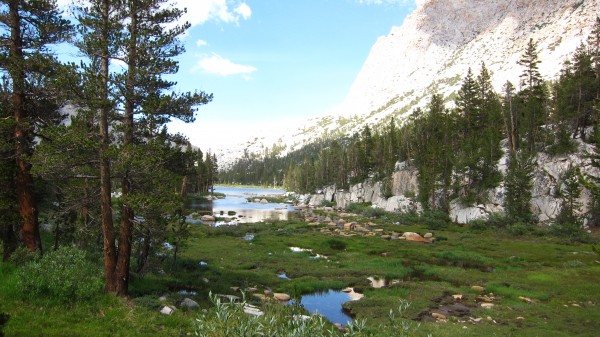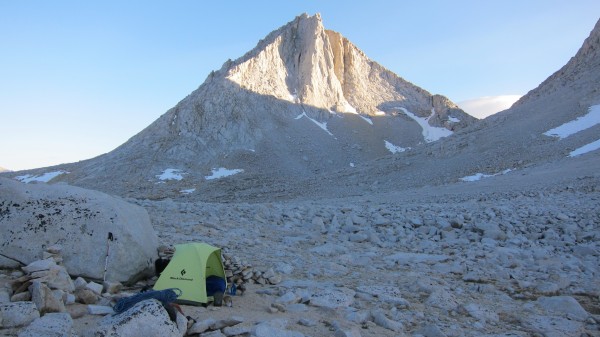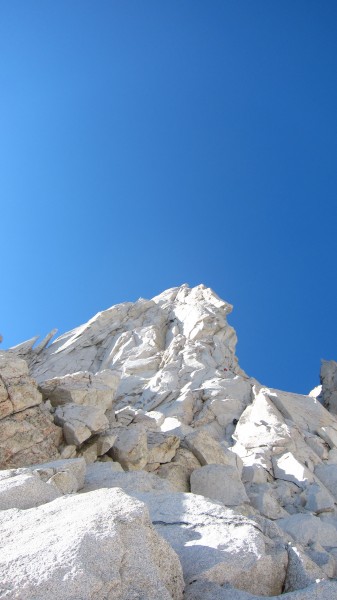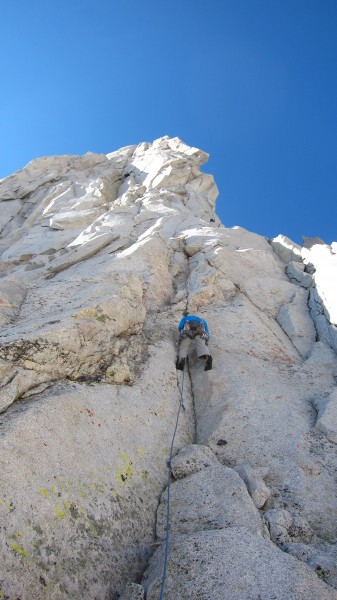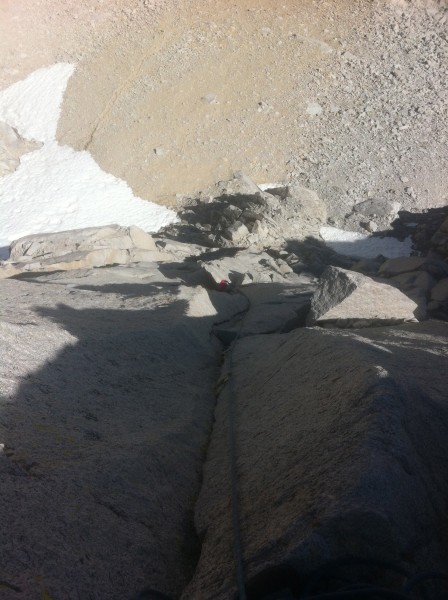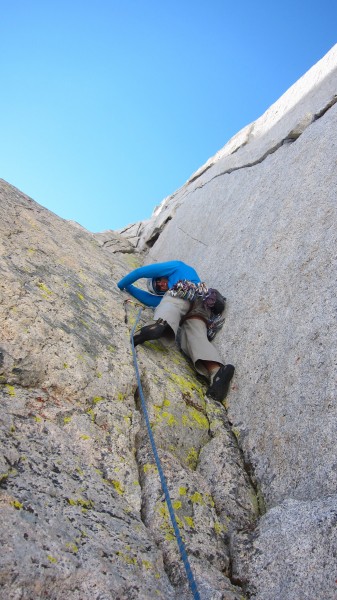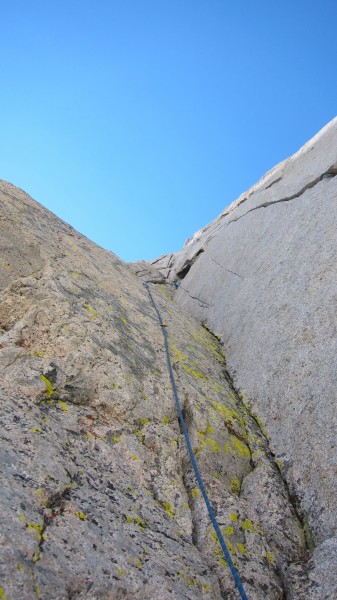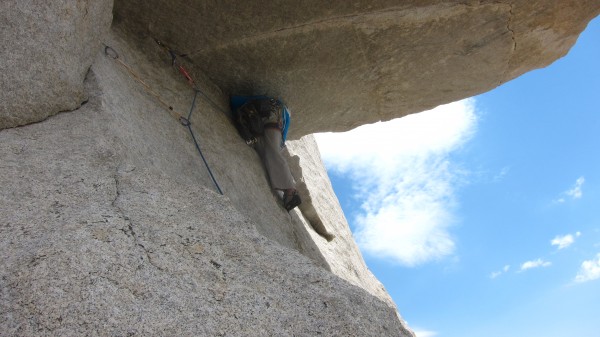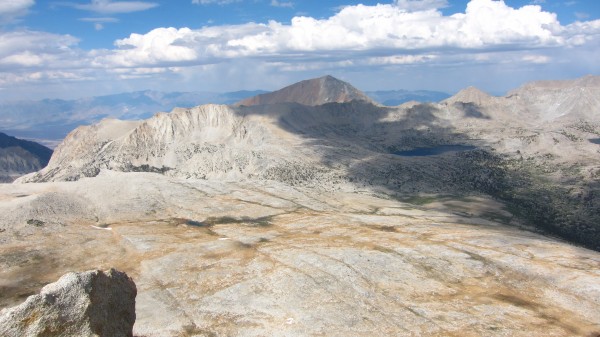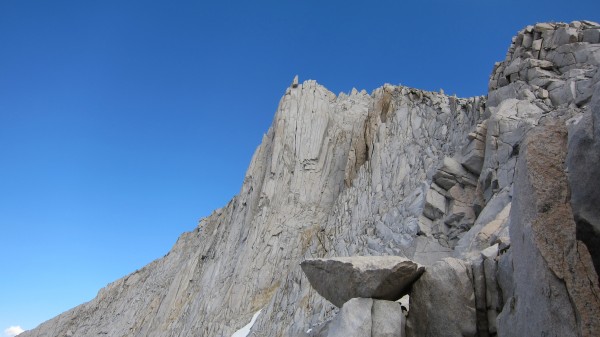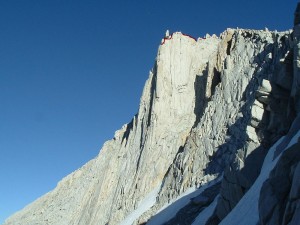When I moved to CA in 2009 I bought the Fiddler/Moynier High Sierra book to get an idea of what the high Sierra had to offer. 2 formations really struck me and reminded me why I climbed in the first place; Merriam Peak was one of them.
The remoteness and relative lack of info on the climb added to the allure but I knew I had quite a bit work to do improving my (lack of) trad skills before heading up to the North Buttress. Fast forward a few years and lots of valley/Tuolumne time and I was ready to make the long slog up Pine Creek to Royce Lakes.
The prior weekend I got the opportunity to climb with someone I've always respected and we managed an 18hr 20 min trip up the RNWF of Half Dome so I figured I would be solid for the North Buttress; I just needed a partner. Somehow I managed to convince someone with 3 compressed disks and no cartilage in their right knee to make a 10 mile approach.
With the long 4th of July weekend we decided to make a comfortable trip of it and camp up at Royce lakes.
Despite having done more committing climbs, Merriam still gave me a few jitters when looked up at it the next morning. It's a rather imposing peak and the route isn't as obvious as I expected (yes, the triple cracks pitch is obvious but the entrance and exit not so much). I thought we had the entire peak to ourselves but as we approached we realized there was a party ahead of us. They were just starting up the Flying Buttress, which looks very rad.
They yelled down some beta as to the start of the North Buttress which saved us some time. The also gave me an added confidence boost by allowing me to see some people clearly more badass send what is clearly a more badass route! With the start identified we headed up without delay:
There is supposed to be a 10a section on P2 but it all felt pretty easy. There are a few short sections of good fingers but overall the rock quality on the first 3 pitches is definitely sub-par. I would say the rock quality is the major drawback of the route (then again, it is an alpine route so just don't expect splitter valley cracks). Darlene took P3 and she made quick work of the awkward traverse under the bulge to get into the giant corner. Being at the base of the triple cracks corner was like a dream come true and it really is a fantastic pitch!
I found the corner climbed very smoothly although I may have made it a bit harder by transitioning between cracks a bit to early in an attempt to save big gear. I highly recommend pushing past the alcove for about a 170' pitch, otherwise P5 will be awkward for the leader. Also note, there is a giant block in the corner with a chalk 'x' on it. If it goes, your belayer doesn't have a chance so use extreme caution.
Darlene took P5 which has another nice fingers section getting to the belay. P6 is the crux and while pretty secure it'll make you breath a bit harder for sure. It's more sustained than cruxy and frankly I thought it was the best pitch on the climb (sorry, no pics, you'll have to see it for yourself). P7 has the S-crack and offers a little bit of wide fun. P8 has the exciting roof traverse which offers lots of exposure.
The next few pitches offer a bit of wandery ridge traversing. There is a great short section of pure knife edge ridge traversing but by that point we were too hungry to stop and take a few pics. This summit is quite nice too.
We did the route in 7 hours, certainly no speed record but it made for a great day. In the end, I was grateful to have been able to finally tick off a climb I had admired for several years, but even more grateful to have been able to do it with a great partner. I can't imagine doing that hike (both ways) with such a significant knee injury and that alone was the most impressive part of the trip!
P.S.: This past weekend I got an up close look at the other climb that struck me from the Fiddler/Moynier book and I nearly pooped my pants,... I've got some serious wide training to do!

